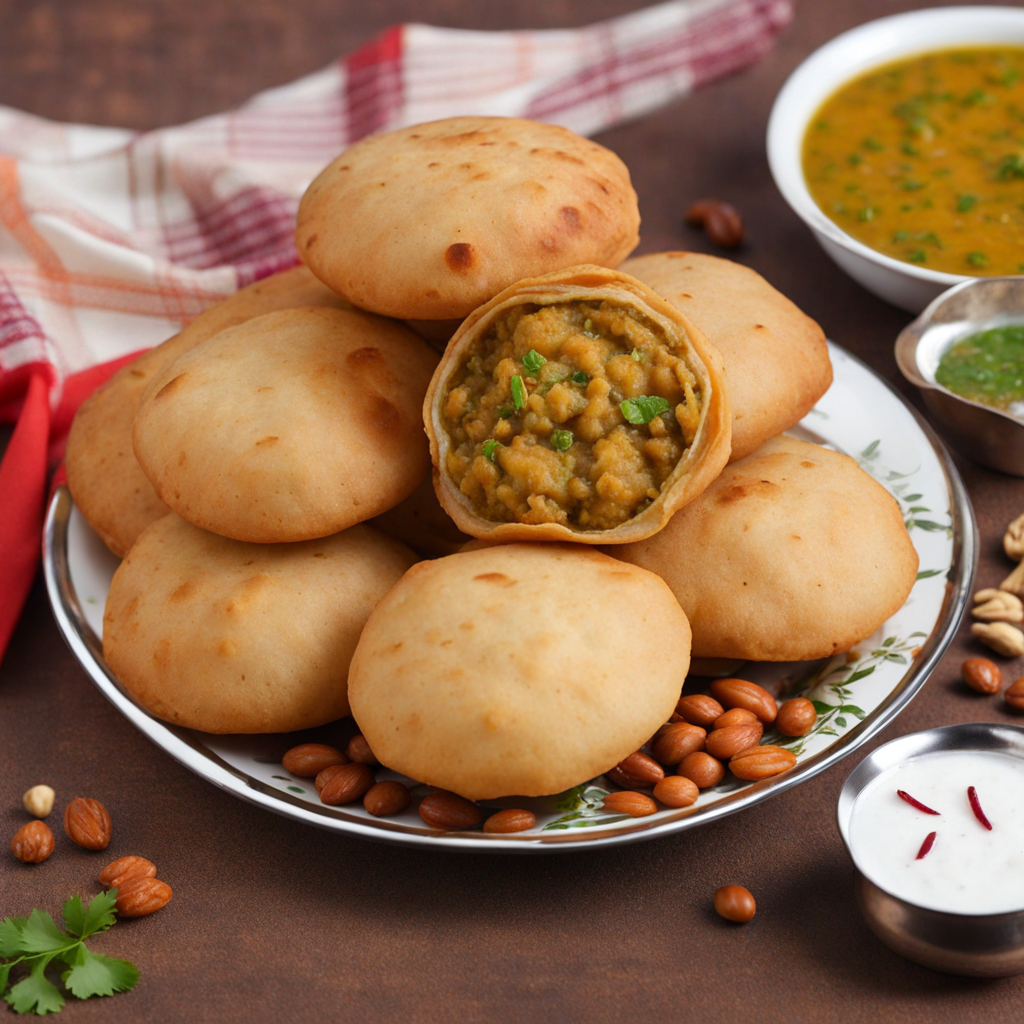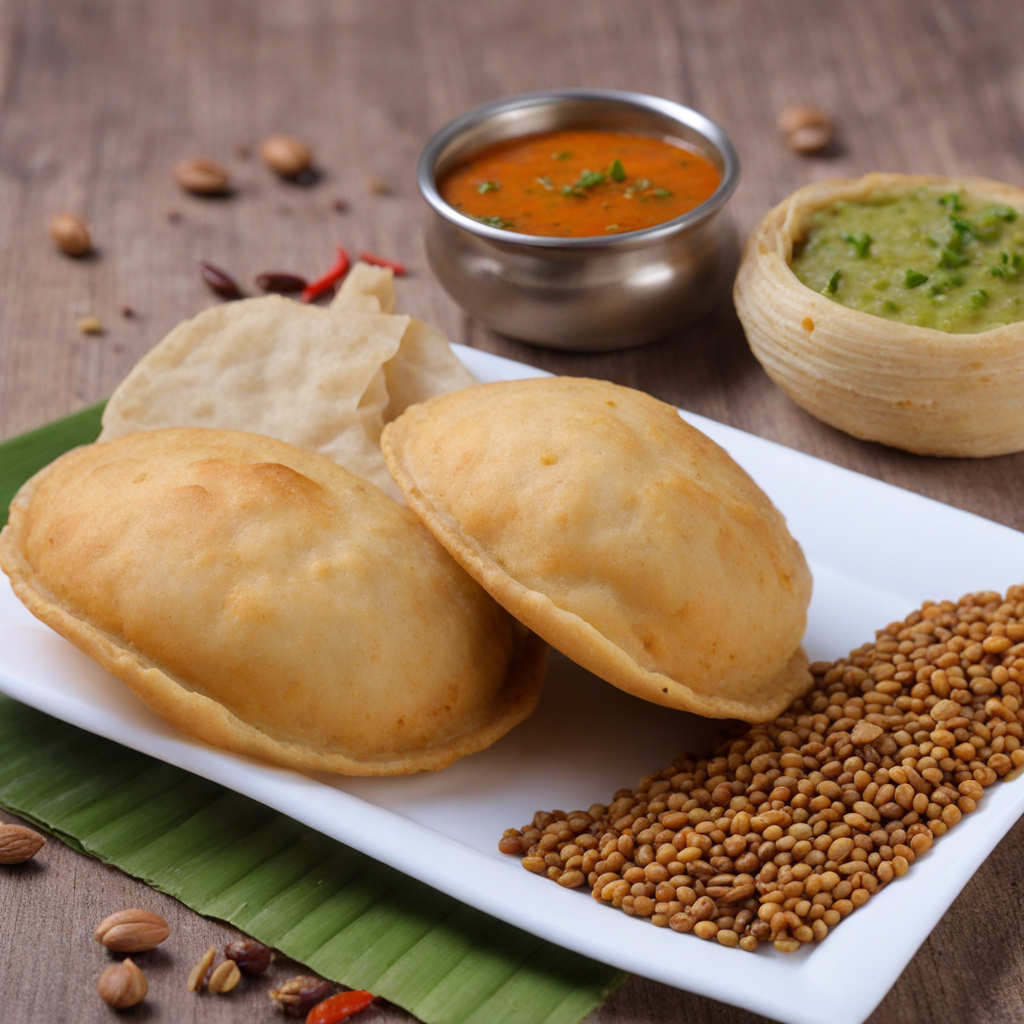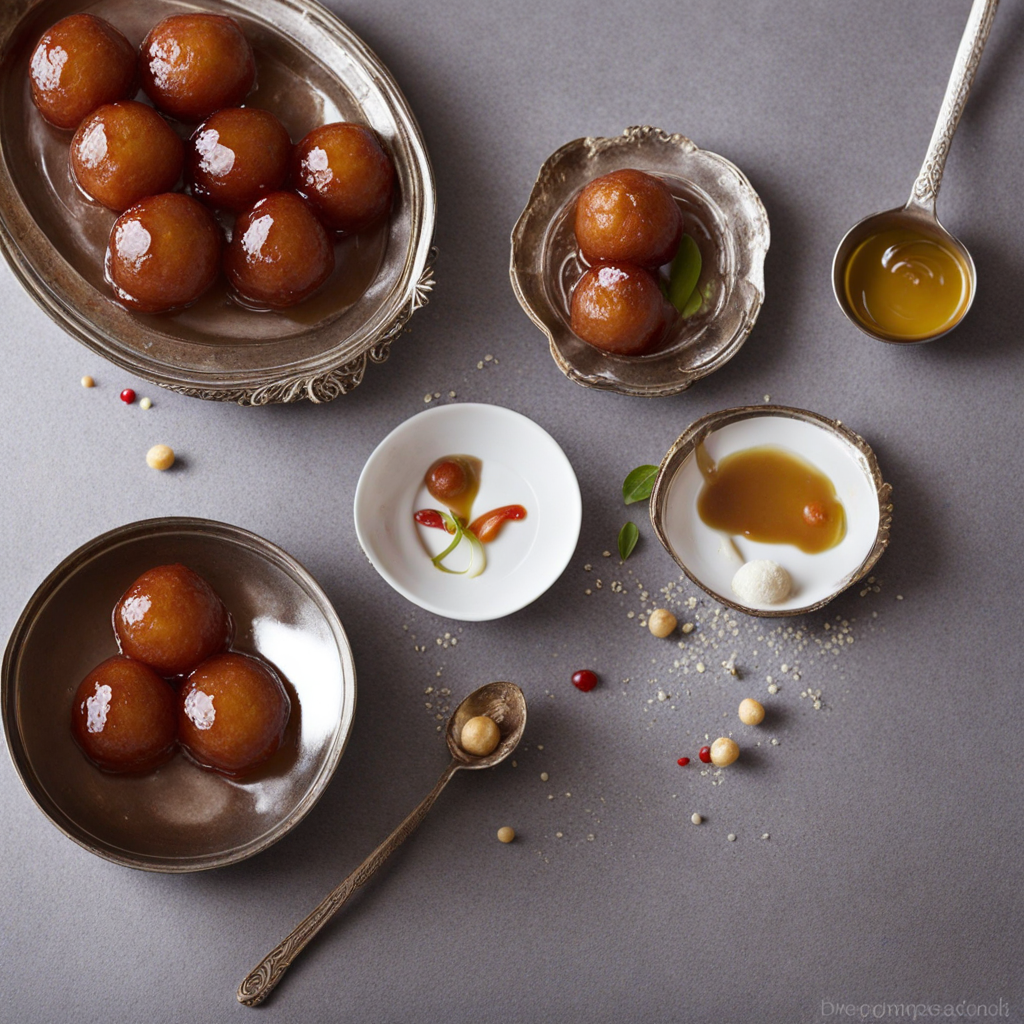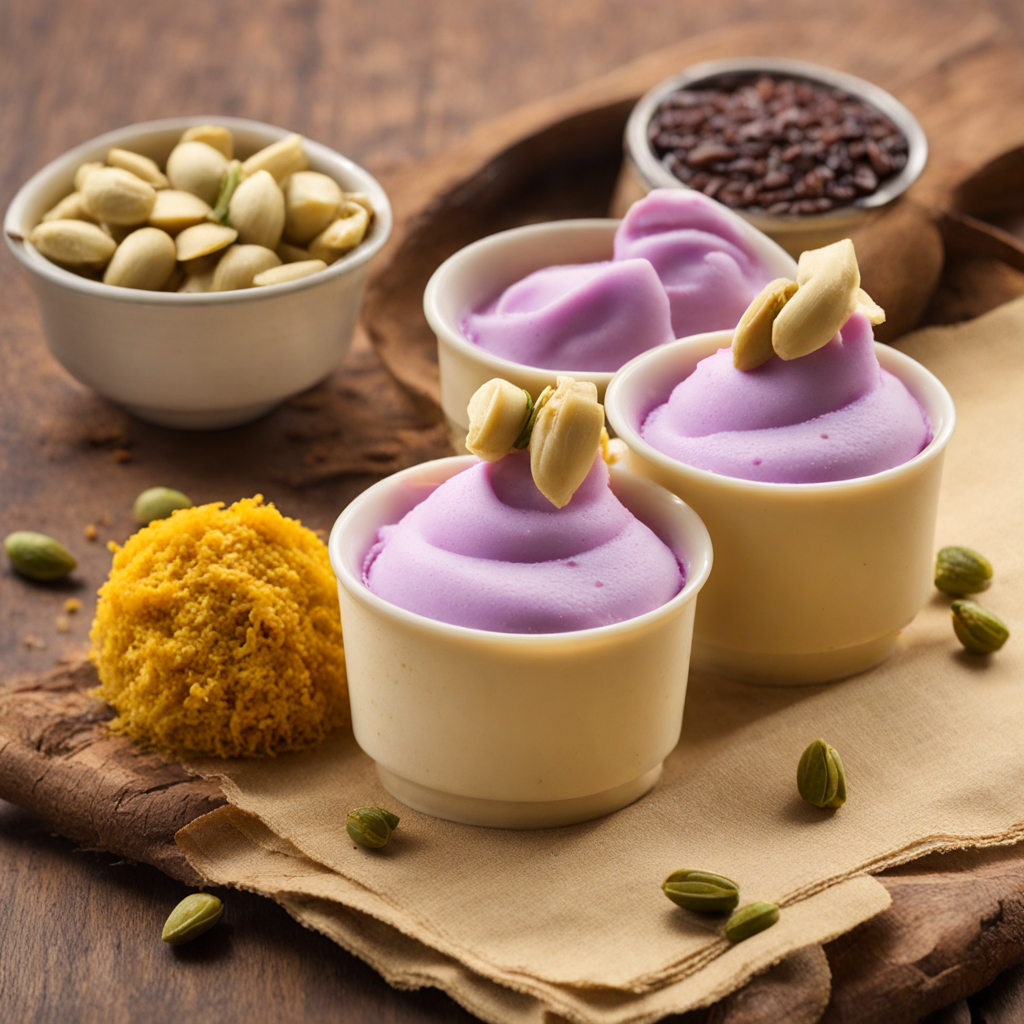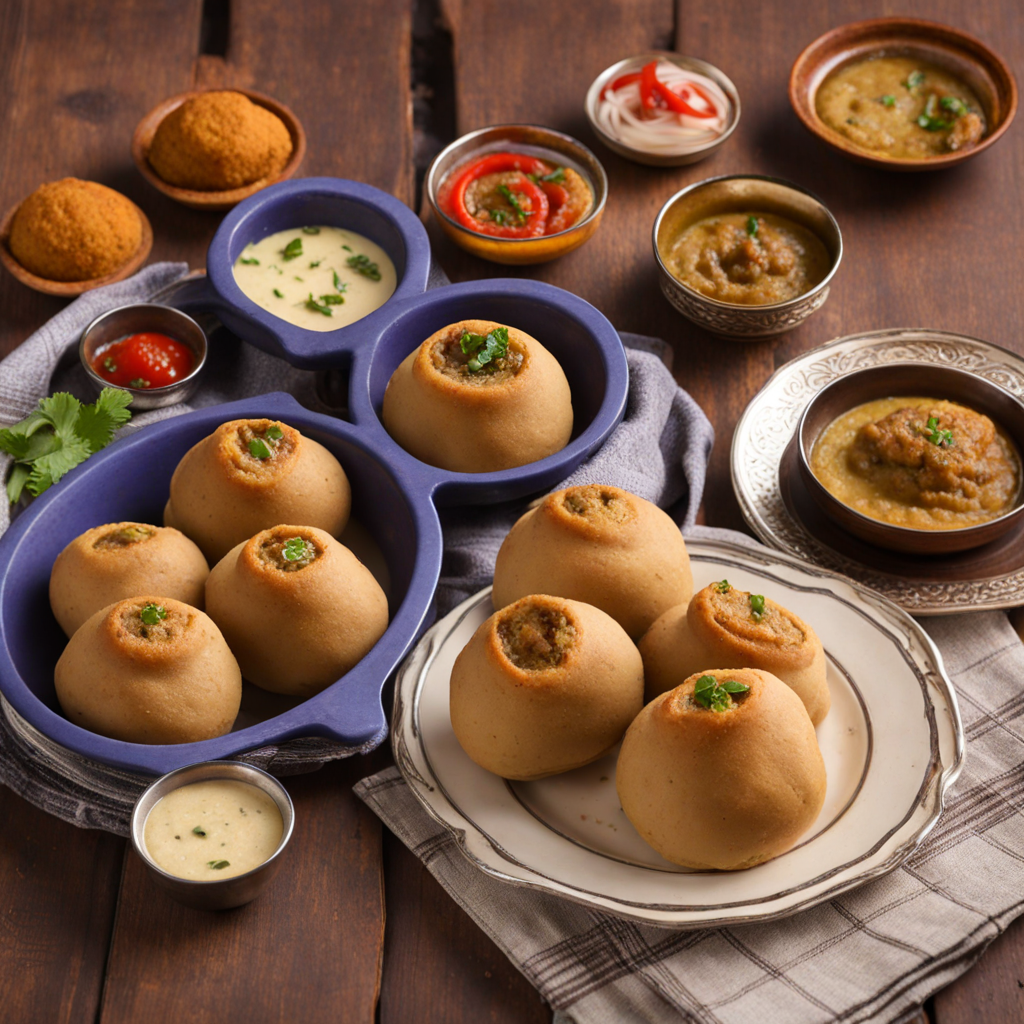Kachori
Kachori is a popular snack from India, deeply rooted in the culinary traditions of the subcontinent. Its origins can be traced back to the Indian states of Rajasthan and Uttar Pradesh, where it is often served as a street food delicacy. Kachoris have a rich history, often linked to festive occasions and celebrations. The dish is believed to have been introduced during the Mughal era, with influences from the Persian cuisine, which was known for its rich flavors and intricate cooking methods. The primary flavor profile of kachori is a delightful combination of spices and textures. The outer layer boasts a flaky, crispy texture, achieved through meticulous frying, while the filling is typically spicy, savory, and aromatic. The most common fillings include a mixture of lentils (usually moong dal or urad dal), spices such as cumin, fennel, and black pepper, and sometimes even potatoes or peas, which add a comforting creaminess. The balance of heat from the spices and the earthiness of the lentils creates a harmonious taste that is both satisfying and addictive. Kachoris are often served with tangy chutneys, such as tamarind or mint, which enhance their flavor and add a refreshing contrast. Preparation of kachori involves multiple steps that require skill and patience. The dough is made from all-purpose flour (maida) mixed with a generous amount of oil or ghee, which is kneaded until smooth and pliable. This step is crucial as it contributes to the
How It Became This Dish
The culinary delight known as कचोरी (Kachori) has a rich and fascinating history that reflects the diverse tapestry of Indian cuisine. Its origins can be traced back to the ancient times of India, where the art of frying and stuffing food items was practiced by various cultures. The earliest mentions of Kachori can be linked to the royal kitchens of the Mughal Empire, where the integration of Persian and Indian culinary traditions gave rise to a plethora of fried delicacies. Kachoris, with their crispy exterior and flavorful fillings, quickly became a favorite among the nobility. The fundamental concept behind Kachori is the use of a thin dough made from all-purpose flour (maida), which is rolled into small discs and filled with a savory mixture before being deep-fried until golden brown. Traditionally, Kachoris are stuffed with a variety of fillings, including spiced lentils, potatoes, and other vegetables, with each region in India offering its interpretation. The dish is not only a testament to the innovation of Indian cooking but also serves as a canvas for the local flavors and ingredients available in different areas. Over time, Kachori evolved into a popular street food, particularly in North India. Cities like Jaipur and Varanasi became renowned for their unique takes on this dish. In Jaipur, for instance, the Dal Kachori is a famous variant that features a spicy lentil filling, often enjoyed with tangy chutneys and yogurt. In Varanasi, the Kachoris are often served with a side of spicy potato curry, creating a satisfying meal that exemplifies the local culinary preferences. The cultural significance of Kachori extends beyond mere sustenance; it is associated with various festivals and celebrations across India. During the festival of Holi, Kachoris become a staple item on many festive platters, symbolizing joy and togetherness. Families gather to prepare these treats, sharing recipes passed down through generations. This communal aspect of cooking not only enhances the flavor of the food but also strengthens familial and social bonds. In addition to its festive association, Kachori is celebrated for its versatility. Different regions in India have developed their unique Kachori varieties, such as the Methi Kachori in Gujarat, which incorporates fenugreek leaves into the dough, or the Khasta Kachori from Uttar Pradesh, known for its flaky texture. Each variation tells a story of local ingredients and cooking methods, showcasing the adaptability of this beloved dish. The rise of Kachori as a street food phenomenon in urban India in the late 20th and early 21st centuries has transformed its accessibility and popularity. Street vendors in bustling markets and food fairs across cities like Mumbai and Delhi serve hot Kachoris with a variety of chutneys and side dishes, attracting locals and tourists alike. This shift has also led to the emergence of gourmet versions of Kachori in upscale restaurants, where chefs experiment with fillings such as cheese or exotic spices, bringing a modern twist to a traditional favorite. Moreover, as India became more interconnected with the global food scene, Kachori found its way into the diaspora, with Indian communities around the world embracing this dish. From the food stalls at fairs in the United States to Indian restaurants in the UK, Kachori has garnered a following that transcends geographical boundaries. This global popularity has further enriched the dish, with fusion recipes incorporating international flavors and cooking techniques, allowing Kachori to evolve continuously. The health-conscious movement has also influenced the way Kachoris are prepared and consumed. With rising awareness about nutrition, many chefs and home cooks now opt for healthier baking methods rather than deep-frying. Baked Kachoris made with whole wheat flour and filled with nutrient-rich ingredients have emerged, catering to those who wish to enjoy this delectable treat without compromising their dietary preferences. In contemporary times, Kachori has also found a place in culinary competitions and food festivals, where chefs showcase their creativity and innovation. These events often highlight the cultural heritage associated with Kachori while encouraging a new generation of food enthusiasts to appreciate traditional Indian cuisine. The competitive spirit surrounding Kachori has led to a resurgence of interest in regional specialties, prompting chefs to explore and revive long-forgotten recipes. The journey of Kachori, from its royal origins to its status as a beloved street food, reflects the dynamic nature of Indian cuisine. It encapsulates the essence of India's culinary diversity, where regional variations and cultural influences intertwine, creating a dish that resonates with people across generations. Kachori is not just a food item; it is a celebration of community, culture, and tradition. As it continues to evolve, it remains an integral part of India's gastronomic landscape, reminding us of the flavors and stories that bind us together in the vibrant tapestry of Indian food heritage. The future of Kachori is promising, with the potential for even more innovation while still honoring its storied past.
You may like
Discover local flavors from India


